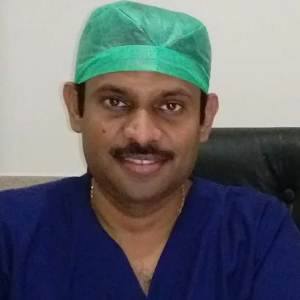Cervical Spondylosis Treatment in Alwarpet, Chennai
Cervical spondylosis is an ailment caused by the depreciation of the spinal disks. Earlier, it accompanied old age, but in the present times, it has also started affecting the younger generation, especially people in their 20s and 30s.
According to cervical spondylitis doctors in Chennai, the condition is treatable. It is imperative to understand the causes and symptoms and take proper measures for treatment. This blog covers everything you should know about cervical spondylosis.

What are the symptoms of cervical spondylosis?
Some of the known symptoms include:
- Stiffness and pain in the neck
- Grinding sound while turning the neck in any direction
- Muscle spasms/cramps in the neck and shoulder
- Headaches that originate from the neck
Other less common symptoms are:
- Lack of coordination and difficulty in walking
- Loss of bladder and bowel function
- Numbness in your arms, hands, legs or feet
When do you need to see a doctor?
If you notice any of the symptoms mentioned above, you should seek medical help.
You can consult a reputed cervical spondylitis doctor in Alwarpet for your treatment.
Request an appointment at Apollo Spectra Hospitals, Alwarpet, Chennai.
Call 1860 500 2244 to book an appointment.
What causes cervical spondylosis?
Apart from aging, the possible causes of this condition include:
- Dehydrated disks: Disks act like cushions in the vertebral column. Over time, the jelly-like substance inside them might dry out. This may cause friction in spinal vertebrae, which causes pain.
- Herniated disks: Cracks in the spinal disks lead to herniated (bulging) disks. These cracks allow leakage of the internal cushioning material that presses on the spinal cord and nerves, causing pain that radiates down the arm.
- Stiff ligaments: Spinal ligaments stiffen with age and reduce the flexibility of your neck.
- Bone spurs: Sometimes, your spine produces extra bones in a misguided effort to strengthen the spine. This overgrowth presses on the spinal cord and nerve roots, resulting in pain.
- Injury: Neck injuries increase the risk of cervical spondylosis.
- Overuse: Heavy lifting may result in advanced wear and tear of the spine, resulting in cervical spondylosis.
What are the risk factors for cervical spondylosis?
The factors which increase the risk of cervical spondylosis include:
- Old age
- Neck injuries
- Smoking
- Strenuous exercise or work
- Obesity
- Genetic factors
What are the types of cervical spondylosis?
- Myelopathy: This is a type of cervical spondylosis in which one experiences vigorous pressure on the spinal cord. Symptoms may include numbness in the arms and legs, muscle spasms and loss of control over bladder and bowel movement.
- Radiculopathy: This occurs when the bony projections press on the nerves while running through the vertebrae. As a result, a person may experience shooting pain in both arms.
- Axial Joint Pain: It is also known as mechanical neck pain. One may also experience aches around the chest wall and shoulder area.
Since no two cases are the same, consult cervical spondylitis specialists in Alwarpet, Chennai, before proceeding with any treatment option.
What are the treatment options for cervical spondylosis?
In most cases, cervical spondylosis treatments are non-invasive. These include:
- Medicines: pain killers, muscle relaxants, anti-inflammatory medicines.
- Physiotherapy: It improves the flexibility of the neck and provides long-time relief from pain. It also improves posture and helps you regain normal neck function.
- Soft Cervical Collar: Wearing a neck collar offers temporary relief. However, you should not wear it for long periods as it may affect the strength of the neck muscles.
- Heating Pad/Cold Pack: Using a heating pad or cold pack offers pain relief for sore muscles.
If your condition is severe and does not respond to the treatments mentioned above, your doctor may recommend surgery.
Conclusion
Cervical spondylosis is often an age-related condition that causes stiffness and pain in the neck. However, it can also be caused by other factors that include lifting heavy weights, inappropriate posture, and obesity.
We can't undo the condition, but various treatments help reduce the pain and discomfort to almost zero.
Making a diagnosis for cervical spondylosis includes a physical examination, imaging tests (X-ray, MRI, CT scan), and nerve function tests (electromyogram).
It may lead to loss of mobility.
Yes, it is often accompanied by fainting.
Symptoms
Our Doctors
DR. KARTHIC BABU NATARAJAN
MBBS,MD, DNB...
| Experience | : | 13 Yeras Experience |
|---|---|---|
| Speciality | : | Pain Management... | Location | : | MRC Nagar |
| Timings | : | On Call... |
DR. SHEERIN SARAH LYSANDER
MBBS, MD(Anesthesiol...
| Experience | : | 8 Yeras Experience |
|---|---|---|
| Speciality | : | Pain Management... | Location | : | MRC Nagar |
| Timings | : | Mon - Sun : 7:00 AM ... |
Our Top Specialities
NOTICE BOARD
CONTACT US
CONTACT US
 Book Appointment
Book Appointment




.svg)
.svg)
.svg)
.svg)








